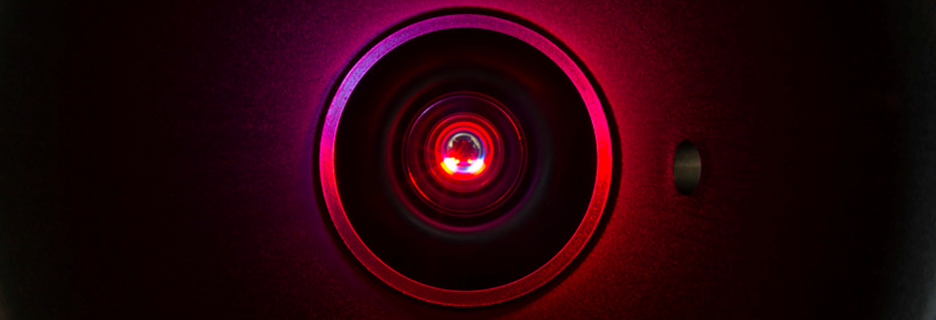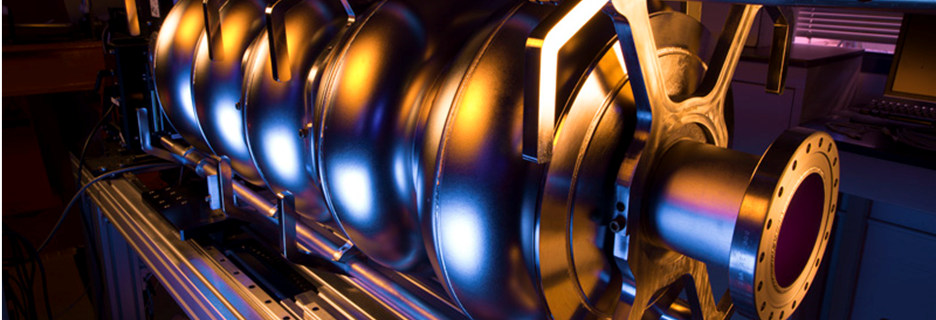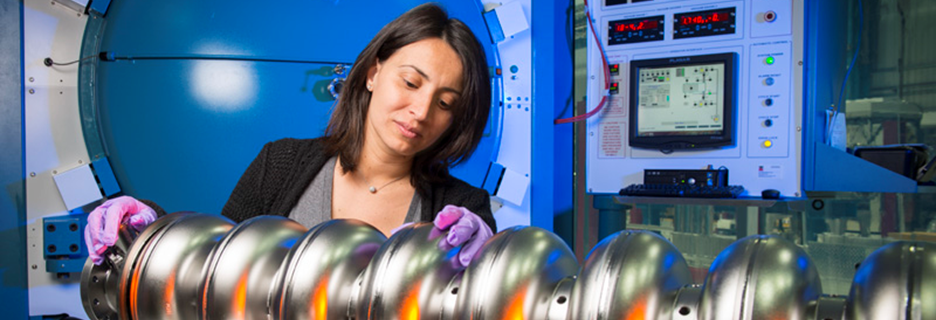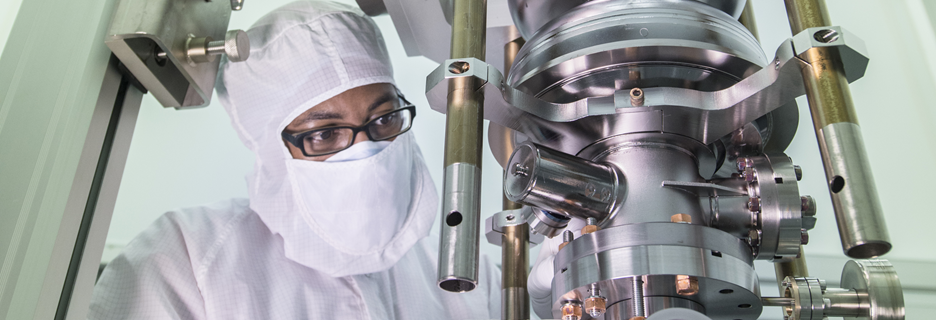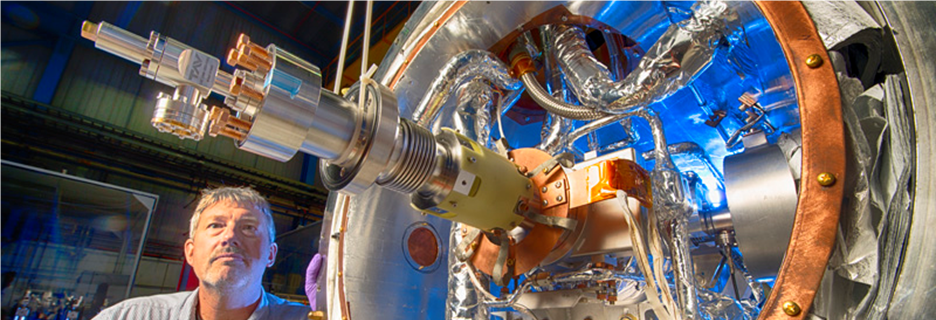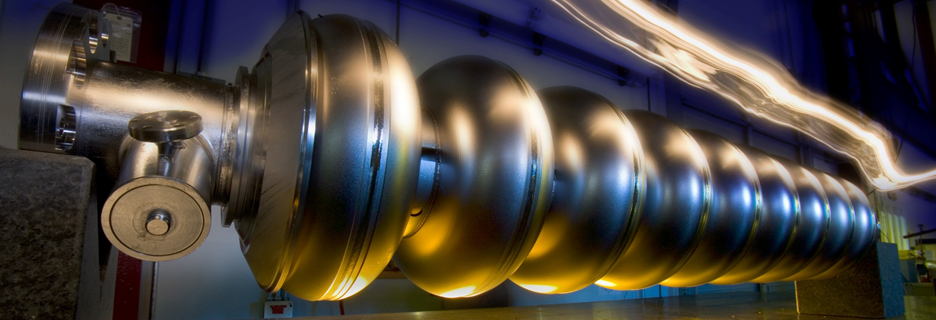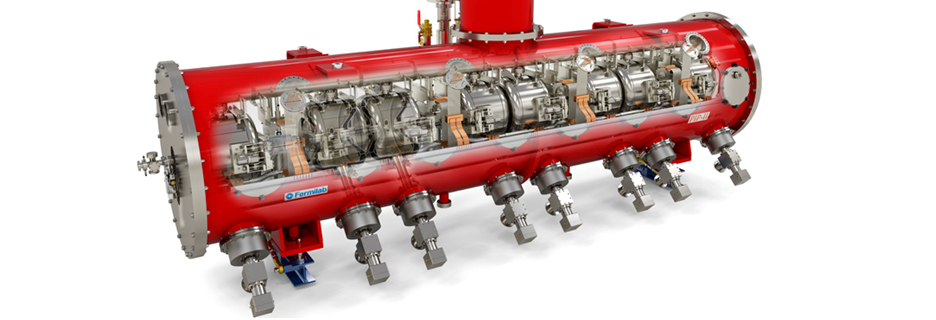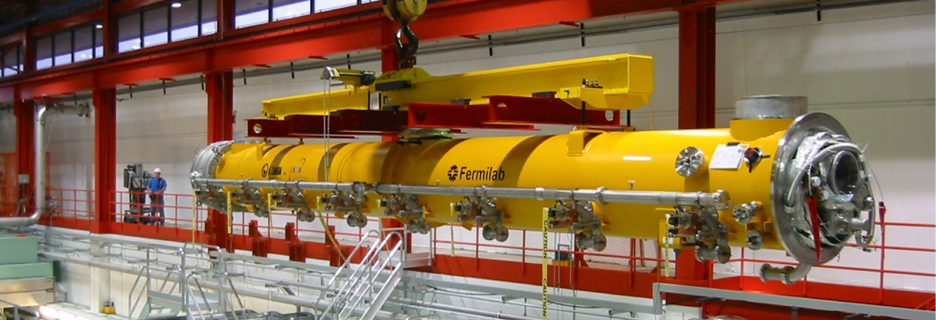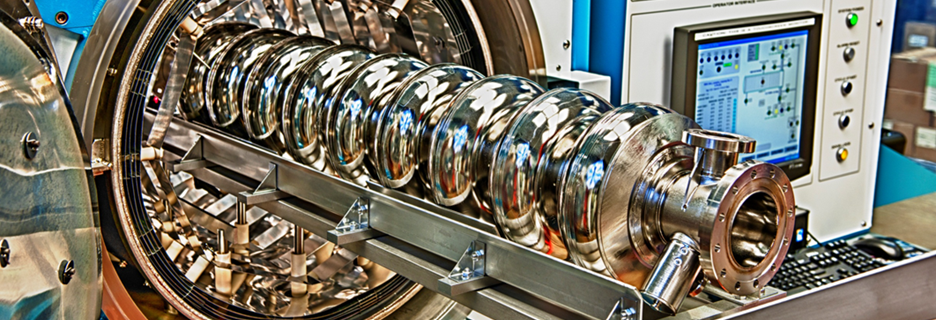Mission
SRF Program is an integrated managing organization for Fermilab’s SRF R&D and SRF Facilities to provide efficient research and various project/program throughput. Extensive cavity and niobium material inventory is also maintained.
Superconducting radio frequency (SRF) technology
Superconducting radio-frequency (SRF) cavities became the modern state-of-the-art acceleration choice for the majority of current and planned particle accelerators due to their unmatched capability to provide continuous-wave (CW) acceleration, as well as to minimize the beam-cavity interaction to preserve the superior beam properties. Powerful SRF accelerators are currently in operation worldwide, and new upcoming ones are also taking advantage of this enabling technology.
Most recent Fermilab’s recent innovations include the discovery of the nitrogen doping effect as well as Meissner expulsion modification by thermal gradients, which opened up a route to up to a factor of 4 higher quality factors Q of SRF cavities enabling cost and operation efficiency savings for SRF accelerators, with LCLS-II project at SLAC being the first benefactor.
Collaborations
SRF Program benefits from a large world-wide collaboration network including Cornell University, Univ. of Illinois, Urbana-Champaign, Northwestern University, Univ. of Chicago, KEK, ANL, JLab, CERN, INFN, PSI, Univ. of Bath, Western University, JLab, ANL, LANL, and SLAC.
Education
Students and postdocs play an important role in both research and improving the state-of-the-art facility capabilities. Current participants are:

